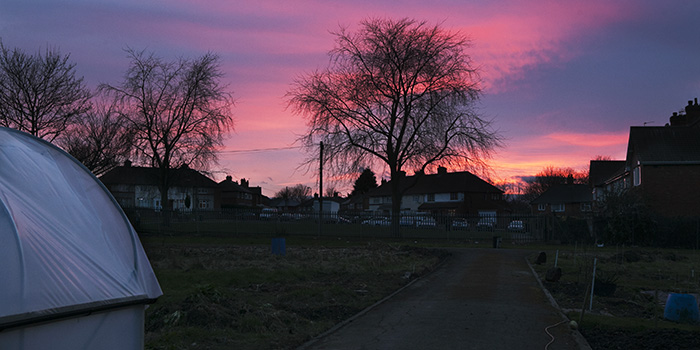As we head towards the shortest day of the year, it’s tempting to think there’s not much to do on the allotment. Especially when it’s windy or a grey overcast day, who wants to be outside for long?
But we’ve had a very mild autumn so far – with some lovely bright days, so a real treat to be out in the sun. Time put in now on your allotment will bring rewards next year – and there’s lots of jobs which will make a difference to what you can grow and eat.
Especially for newcomers trying to sort out plots which haven’t been cultivated for years, it’s a good idea to dig and weed while the ground is still reasonably warm. Much easier than rushing to get the weeds out in March or April when it’s time to sow seeds. And the exercise keeps you warm on cold days.
Alternatively, you may want to try the ‘No-dig’ approach (lots of information on Youtube and the Internet generally – google Charles Dowding). One of our new plotholders at Blackpit Lane who has access to lots of cardboard is having a go with this – but it’s not cheap if you have to invest in a lot of manure or compost.
If you haven’t planned what you want to grow and eat next year, now’s the time to do it – look at what is on your plot to eat at the moment. If the answer is: not much, think about what can be harvested late autumn and winter so you can have something fresh every day. Spinach and chard are amazing all the year round, while pumpkins and potatoes store well if you grow enough to last. Fruit like raspberries have autumn varieties which will keep ripening into mild Novembers like the one we’re having now. And lots of fruit (including tomatoes which is also a fruit) can be frozen or made into jams and chutneys that will make for delicious meals any time of the year.
Apart from planning and preparing the plot for spring planting, you can still start plants off – broad beans are a good example of a vegetable which you’ll be able to harvest early in the Spring if you choose the right variety. Asparagus, garlic, and spring onions can be planted in the autumn. Cuttings can be taken of your favourite bushes, flowers and vegetables. Fruit trees and bushes can be planted or transplanted, before it gets too cold.


Garlic likes the cold 
Planting asparagus
If you have fruit trees, bushes or vines, it’s the right time for pruning – which will help produce a better crop next year.

For newcomers, winter is a good time for building your shed or putting up a polytunnel, or making paths and raised beds to make it easier to keep your plot tidy, weed-free and diseases at bay. For more established plotholders, find the time to sort, organise, clean and tidy your plot and your sheds, polytunnels, greenhouses. Fix guttering, downpipes and butts so you can harvest rainwater.
Make space for compost bins and leaf mould to rot down for next year. Or order some manure and get it piled up ready for spreading.

plan your planting 
Compost bins 
Covering for winter 
Collect leaves for… 
Making leaf mould 
Manure your beds 
Mulch for the strawberry beds
For more details on what you can grow, search our website News Archive for ‘Autumn Starts’ and check out websites with expert tips: the RHS (Royal Horticultural Society) has lots of good advice – use their search facility. And of course on YouTube there are lots of gardeners doing practical demonstrations of how to dig, plant, prune, take cuttings and everything else you might need to find out about. Give it a go, nature is very forgiving. Happy gardening!










































